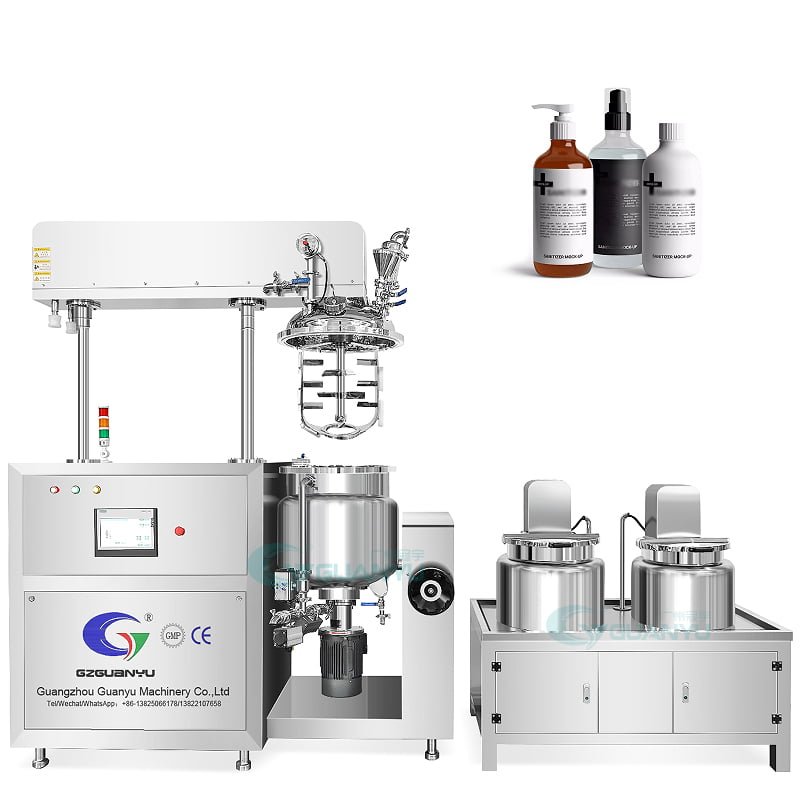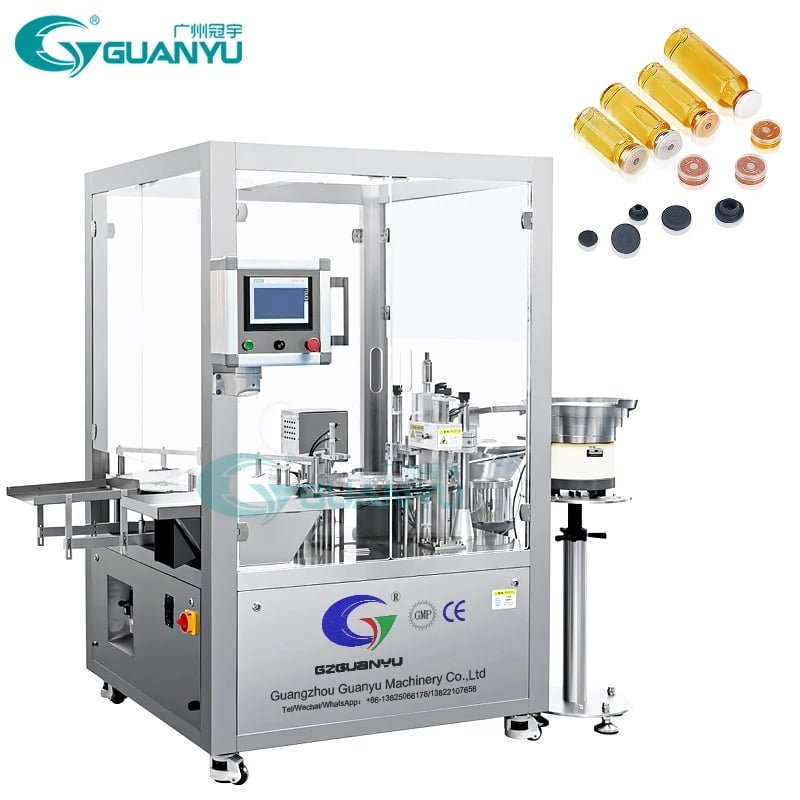มายองเนส, วัตถุดิบหลักในห้องครัวหลายแห่ง, เป็นเครื่องปรุงรสอเนกประสงค์ที่ใช้ทั่วโลก. เนื้อครีมและรสชาติที่หลากหลายทำให้มันเป็นส่วนเสริมของแซนวิช, สลัด, และอาหารอื่น ๆ อีกมากมาย. แต่การสร้างมายองเนสที่สมบูรณ์แบบเป็นกระบวนการที่ซับซ้อนซึ่งต้องใช้ความแม่นยำและอุปกรณ์ที่เหมาะสม. A critical component in this process is the Blending agitator, which ensures the ingredients are mixed thoroughly to achieve the desired consistency and taste. This article will delve into the various types of blending reactors suitable for making mayonnaise, discussing
The Science Behind Mayonnaise
Before exploring the suitable blending reactors, it’s essential to understand the science behind mayonnaise. Mayonnaise is an emulsion, which means it’s a mixture of two immiscible liquids—in this case, oil and water (or vinegar and lemon juice). Emulsifying these liquids requires a third ingredient, an emulsifier, which in mayonnaise is usually egg yolk. The emulsifier stabilizes the mixture, preventing the oil and water from separating.
Creating this stable emulsion involves vigorous mixing to break down the oil into tiny droplets dispersed throughout the water. The smaller the droplets, the more stable the emulsion, leading to a smoother, creamier mayonnaise. This is where the blending reactor comes into play.

Types of Blending agitator
Several types of blending reactors can be used to produce mayonnaise, each with its unique advantages. The choice of reactor depends on various factors, including the scale of production, desired texture, and efficiency. The primary types of blending reactors suitable for mayonnaise production are:
- เครื่องผสมแรงเฉือนสูง
- นักปรัชญา
- เครื่องผสมแบบคงที่
- โรงงานคอลลอยด์
- เครื่องผสมดาวเคราะห์
1. เครื่องผสมแรงเฉือนสูง
High-shear mixers are widely used in the food industry for their ability to create fine emulsions quickly. They operate by applying intense shear forces to the mixture, breaking down the oil into microscopic droplets. This is achieved through a rotor-stator mechanism, where the rotor rotates at high speeds within a stationary stator, creating a powerful mixing action.
ข้อดี:
- ประสิทธิภาพ: High-shear mixers can produce a stable emulsion in a short time.
- ความอเนกประสงค์: They are suitable for both small and large-scale production.
- ความสม่ำเสมอ: They ensure a uniform texture in the final product.
Applications in Mayonnaise Production:
High-shear mixers are ideal for mayonnaise production due to their ability to handle high-viscosity products and create a stable emulsion with minimal effort. They are particularly beneficial in industrial settings where large quantities of mayonnaise need to be produced quickly and consistently.


2. นักปรัชญา
Homogenizers are another popular choice for mayonnaise production. They work by forcing the mixture through a narrow gap at high pressure, which breaks down the oil droplets and creates a fine emulsion. There are two main types of homogenizers: high-pressure and ultrasonic.
ข้อดี:
- Fine Emulsion: Homogenizers can create very fine droplets, resulting in a smooth texture.
- ความยืดหยุ่น: Suitable for both laboratory-scale and industrial-scale production.
- ควบคุม: They offer precise control over the emulsion’s characteristics.
Applications in Mayonnaise Production:
Homogenizers are particularly useful when producing mayonnaise on a large scale. They ensure uniformity and stability in the final product, making them ideal for commercial mayonnaise production.

3. เครื่องผสมแบบคงที่
Static mixers are devices with no moving parts, consisting of a series of stationary elements placed within a pipe or tube. As the ingredients pass through the mixer, they are continuously divided and recombined, creating an emulsion.
ข้อดี:
- Low Maintenance: With no moving parts, static mixers require minimal maintenance.
- ประสิทธิภาพการใช้พลังงาน: They consume less energy compared to high-shear mixers and homogenizers.
- Compact Design: Static mixers are compact and easy to install.
Applications in Mayonnaise Production:
Static mixers are suitable for continuous mayonnaise production processes. They are particularly useful when producing mayonnaise on a smaller scale or when energy efficiency and low maintenance are priorities.
4. โรงงานคอลลอยด์
Colloid mills use a rotor-stator system similar to high-shear mixers but with a different mechanism. The mixture is passed through a narrow gap between the rotor and stator, which can be adjusted to control the size of the droplets. The intense shear forces break down the oil droplets, creating a fine emulsion.
ข้อดี:
- Fine Droplets: Colloid mills produce very fine emulsions.
- Adjustability: The gap between the rotor and stator can be adjusted to control the emulsion’s characteristics.
- ความอเนกประสงค์: Suitable for various food products, including mayonnaise.
Applications in Mayonnaise Production:
Colloid mills are ideal for creating mayonnaise with a very smooth texture. They are commonly used in industrial settings where precision and control over the emulsion are crucial.
5. เครื่องผสมดาวเคราะห์
Planetary mixers are widely used in bakeries and the food industry for mixing dough, batters, และอิมัลชัน. They consist of a stationary bowl and a mixing tool that rotates on its axis while simultaneously orbiting around the bowl, mimicking the motion of planets.
ข้อดี:
- ความอเนกประสงค์: Can be used for a wide range of mixing applications.
- ความสม่ำเสมอ: Provides thorough mixing, ensuring a uniform texture.
- ความยืดหยุ่น: Available in various sizes, suitable for both small and large-scale production.
Applications in Mayonnaise Production:
Planetary mixers are suitable for small to medium-scale mayonnaise production. They are especially useful in artisanal and small-batch production where flexibility and consistency are important.
Choosing the Right Blending Reactor
Selecting the appropriate blending reactor for mayonnaise production depends on several factors:
- ขนาดการผลิต: For large-scale production, high-shear mixers, โฮโมจีไนเซอร์, and colloid mills are ideal due to their efficiency and ability to handle large volumes. For smaller-scale or artisanal production, planetary mixers and static mixers may be more suitable.
- Desired Texture: If a very smooth and fine texture is desired, homogenizers and colloid mills are the best options. High-shear mixers also provide a smooth texture but may not achieve the same level of fineness.
- ประสิทธิภาพการใช้พลังงาน: Static mixers are the most energy-efficient option, making them ideal for continuous production processes where energy consumption is a concern.
- Maintenance and Ease of Use: Static mixers require minimal maintenance due to their lack of moving parts. ในทางตรงกันข้าม, high-shear mixers and homogenizers may require more maintenance but offer better control and efficiency.
บทสรุป
Mayonnaise production is a delicate process that requires precise mixing to create a stable emulsion with the desired texture and taste. Various blending reactors, including high-shear mixers, โฮโมจีไนเซอร์, static mixers, โรงงานคอลลอยด์, และเครื่องผสมดาวเคราะห์, offer different advantages depending on the production scale and specific requirements.
Choosing the right blending reactor is crucial for achieving the perfect mayonnaise, whether for small-scale artisanal production or large-scale industrial manufacturing. By understanding the features and benefits of each type of reactor, producers can make informed decisions that will result in a high-quality, consistent product that meets consumer expectations.
ในที่สุด, the key to successful mayonnaise production lies in the careful selection of equipment that matches the specific needs of the production process, ensuring that every batch is smooth, creamy, and delicious.

